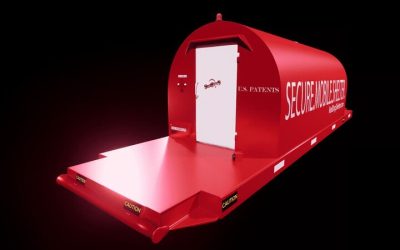When severe weather strikes, having a safe and secure place to shelter can be a lifesaver. An Above Ground Storm Shelter offers a viable solution for those looking to enhance their home safety. Selecting the right storm shelter is crucial, as it involves several factors that cater to your specific needs and circumstances. This article will guide you through the key considerations to help you choose the best above ground storm shelter for your home.
Assessing Your Needs
Space and Size
First, consider how much space you have available and how many people the shelter needs to accommodate. Above ground storm shelters come in various sizes, from compact models suitable for a couple of people to larger units that can house several families. Measure the intended installation area to ensure the shelter will fit without obstructing daily activities.
Material and Durability
The materials used in the construction of storm shelters are critical for ensuring their effectiveness and durability. Common materials include steel, concrete, and fiberglass, each offering different levels of protection and resistance to debris and high winds. Steel shelters are particularly popular due to their strength and resistance to corrosion.
Compliance with Safety Standards
It’s essential that the shelter you choose meets the safety standards set by the Federal Emergency Management Agency (FEMA) and the International Code Council (ICC). These standards ensure that the structure can withstand extreme conditions, including high winds and flying debris.
Location and Installation
Choosing the Right Location
The location of your above ground storm shelter is another vital consideration. It should be easily accessible from all parts of your home, preferably in a spot that does not require crossing an open area. Common locations include garages, backyards, or inside larger buildings.
Professional Installation
While some homeowners may consider self-installation to save costs, professional installation is recommended to ensure the shelter is securely anchored and functions correctly during a storm. This is particularly important for above ground models, which need to be properly anchored to resist overturning or uplift.
Additional Features
Ventilation and Comfort
Proper ventilation is crucial in a storm shelter to ensure a safe and comfortable environment during prolonged use. Look for shelters that offer built-in ventilation systems. Additionally, consider the interior features such as bench seating, lighting, and even restrooms depending on your family’s needs.
Accessibility
If any family members have special needs, consider a shelter with appropriate accessibility features. This includes ADA-compliant doorways, ramps, and interior layouts that accommodate wheelchairs.
Maintenance and Warranty
Regular maintenance is key to ensuring your shelter remains reliable and ready at a moment’s notice. Check for any warranty offered by the manufacturer, which can provide peace of mind and protection against defects.
Choosing the right Above Ground Storm Shelter involves careful consideration of your specific needs, the materials and construction standards, and the shelter’s location and installation. By addressing these factors, you can ensure that your choice not only enhances the safety of your home but also provides a durable solution for years to come. Remember, the protection of your family during severe storms should never be compromised, making the investment in a reliable storm shelter a wise and necessary decision.

